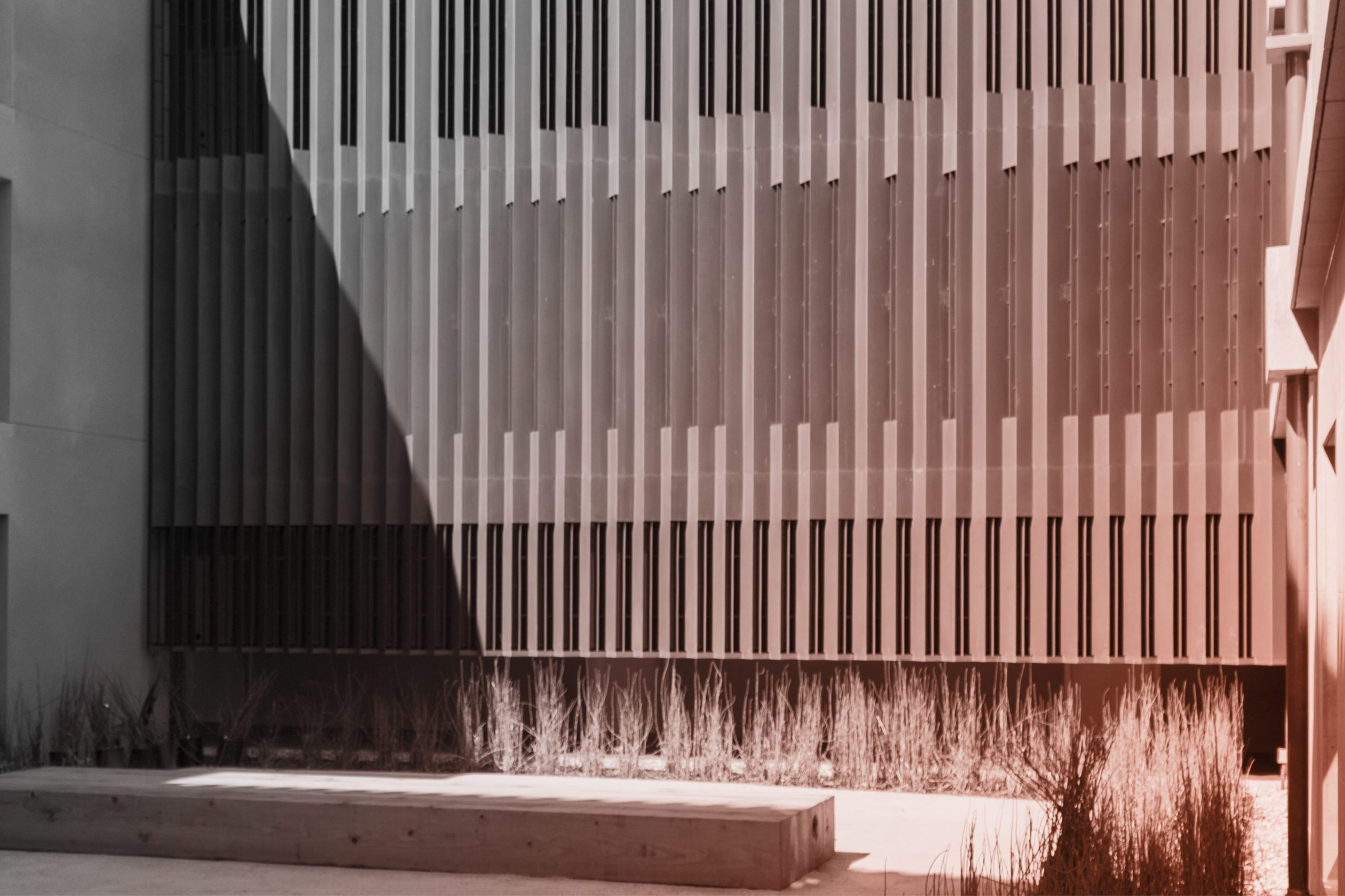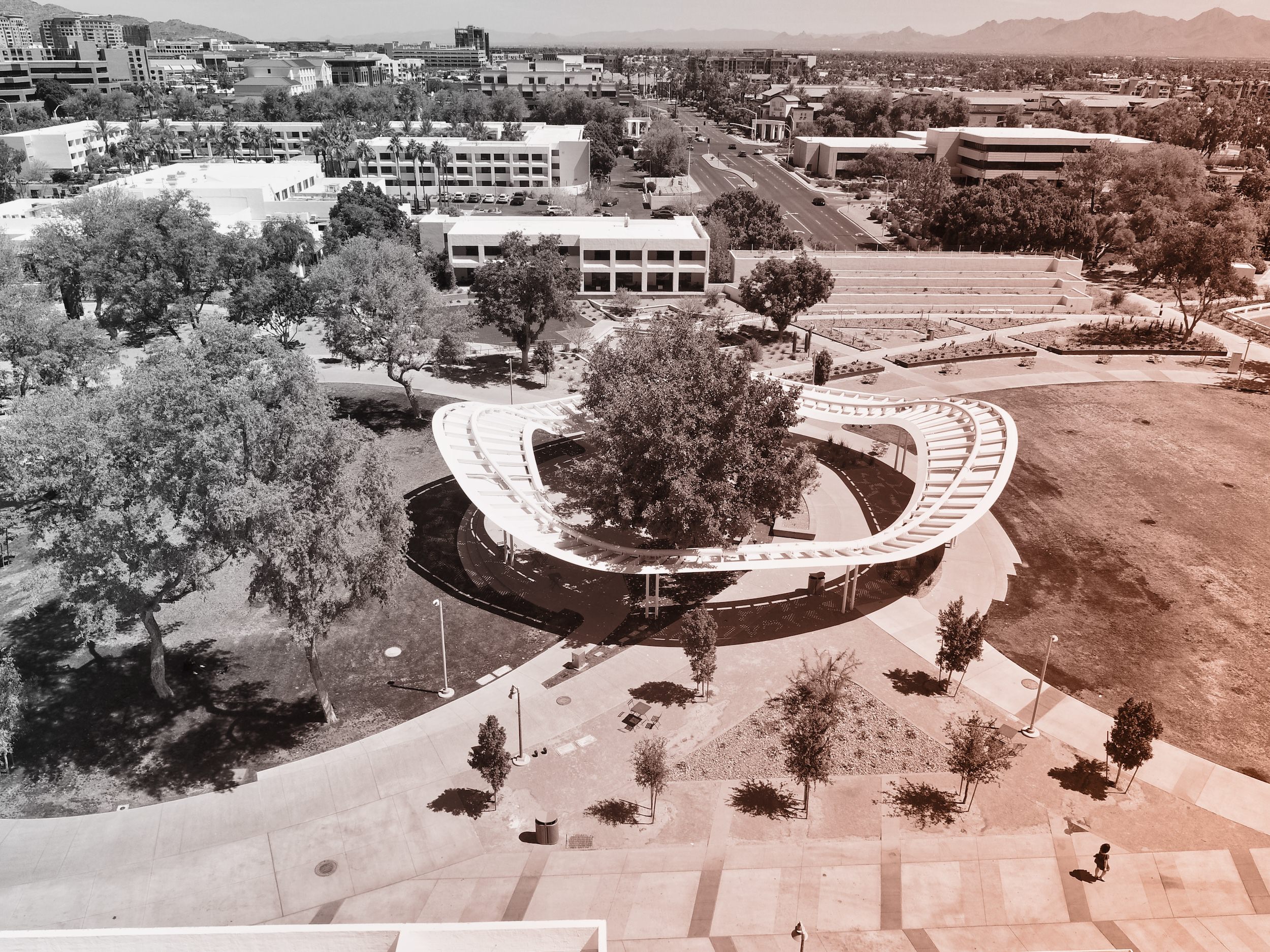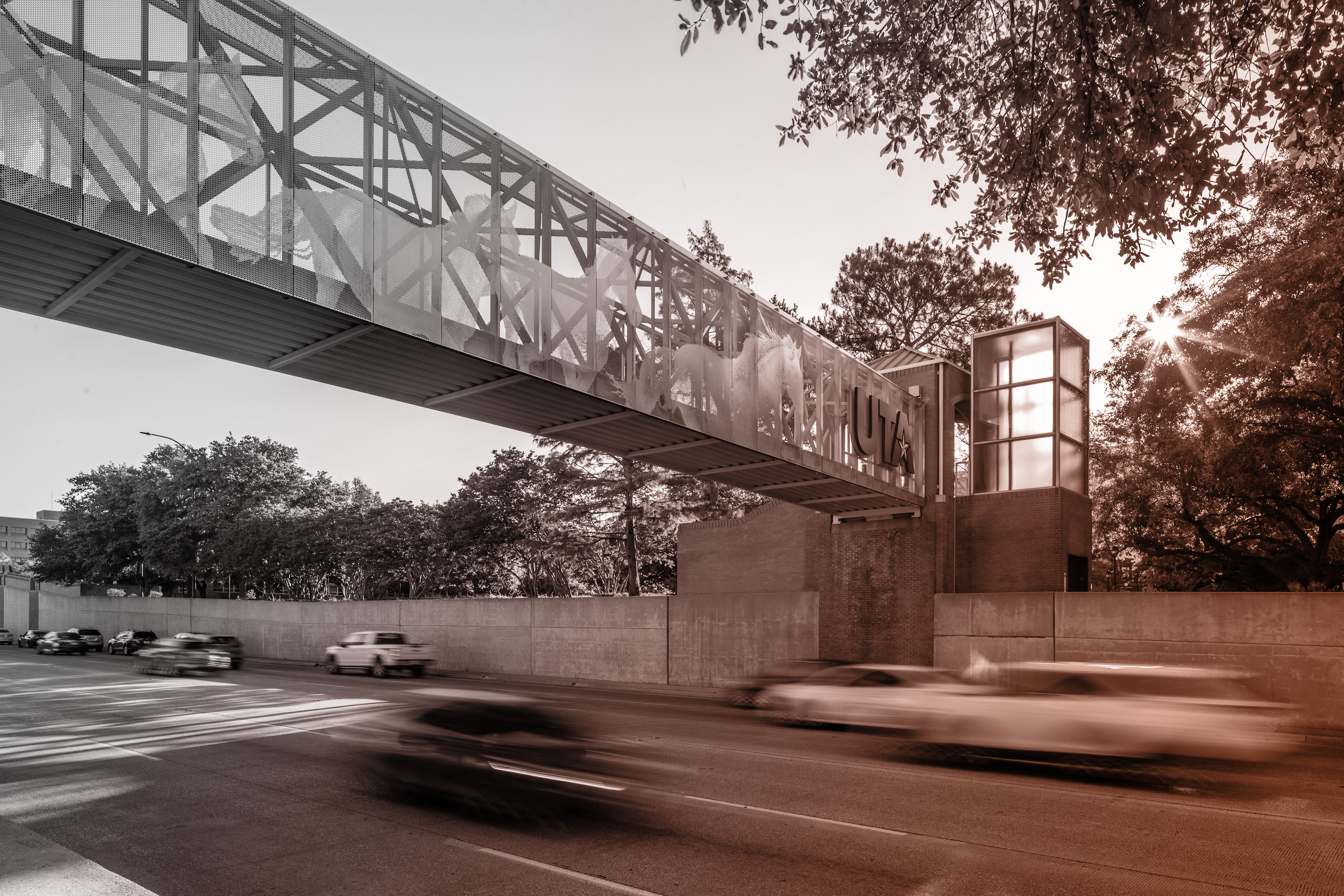R&D
MaterialComposer
Zahner projects are composed of a small number of base metals: Steel, Aluminum, Zinc, and Copper. From there the list grows with a select set of alloys like Stainless Steel (304, 316), Weathering Steel (A606, A588), Anodized Quality Aluminum, Brass, Silicon Bronze, etc. Once you add the varying finishes, coatings, and surface treatments, thousands of options become available for use on architectural projects.
This versatility makes metal cladding a great solution for a multitude of projects, but it also makes for an overwhelming task for designers to search, source, and specify. Since architectural metal is just one of the materials used on a project, the design space explodes to millions of options and combinations with the addition of woods, stones, composites, plants, etc. Exploring the ecosystem of material combinations is a monumental undertaking and a potential rabbit hole for design professionals.
MaterialComposer collage technique demonstrating quick iteration and exploration of material palettes.
Inspired by tools like Coolors.co and Adobe Color—the Labs Team wondered if the same iterative exploratory method used for color combination mixing would be effective for architectural materials. Working with the designer Chris Ference, we have built a simple web tool to explore the vast design space of material selection and comparison. Our core goal was to make exploration effortless, surprising, and fun—while making sourcing, selection and specification a breeze.
Currently we have loaded Zahner’s proprietary metal Surfaces along with a handful of wood, stone, tile, concrete, and plant life. This initial material library provides thousands of potential combinations. By pressing the shuffle button, materials are randomly swapped to produce new iterations. Materials of interest can be locked along the way to narrow the design space for versioning and comparison.
Mood boards or material sample nolling provides a simple method for exploring material interaction and comparison.
App Walkthrough
Curious how it works? Watch a short video walkthrough with Sebastian Muñoz from Architype — our Zahner West Coast representative.







 PHOTO © A. ZAHNER COMPANY.
PHOTO © A. ZAHNER COMPANY.

 Photo ©
Photo © 


 PHOTO ©️ Parrish Ruiz de Velasco (parrch.com)
PHOTO ©️ Parrish Ruiz de Velasco (parrch.com)







 Ɱ, Creative Commons Attribution-Share Alike 4.0 International license, edited.
Ɱ, Creative Commons Attribution-Share Alike 4.0 International license, edited.
